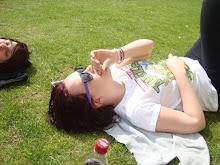
This timeline was taken from Wikipedia and although it's presented in a basic list form I still think it shows a lot about the nature of printmaking. The image appears a bit small but you can click to enlarge.
Woodblock printing is still widely used in art practice today and it's astonishing that it's been around since 200 - and I highly doubt that the techniques they used in the beginning are all that different from those used today! Even screen printing - although it's official date on the timeline is 1907 it had actually been around in China for centuries.
When it comes to traditional print methods I think it's safe to say that the reason they are referred to as traditional is because they have already been perfected. There has been very little development in the actual printing techniques; it is how they are applied, that is important.
Woodcut images, for instance, were initially the only efficient way of illustrating a book. The image would have been cut into a block of its own and used adjacent to movable type blocks. It was then discovered that combining type and imagery in one single block created opportunity for more elaborate layouts. At the time this was cutting edge technology, but if you were going to illustrate a book today, woodcut would probably be the last thing you would consider! Like I said, the technique hasn't changed, only its social context.

With regards to print for industry, I think this is where the real progression has been. Most professional printers today use offset lithography for mass production and the timeline shows lithographical techniques emerging in the 1700's. Whereas traditional print techniques are still celebrated in art practices to this day, the professional print industry is constantly looking to improve the process; make it quicker, cheaper, ecofriendly. Industry has no need to preserve the methods of the past as that will only restrict them from discovering those of the future! Even now, printers are trying to incorporate more digital printing into their work and move away from lithography which requires at least 4 passes through the press for full colour images.


No comments:
Post a Comment